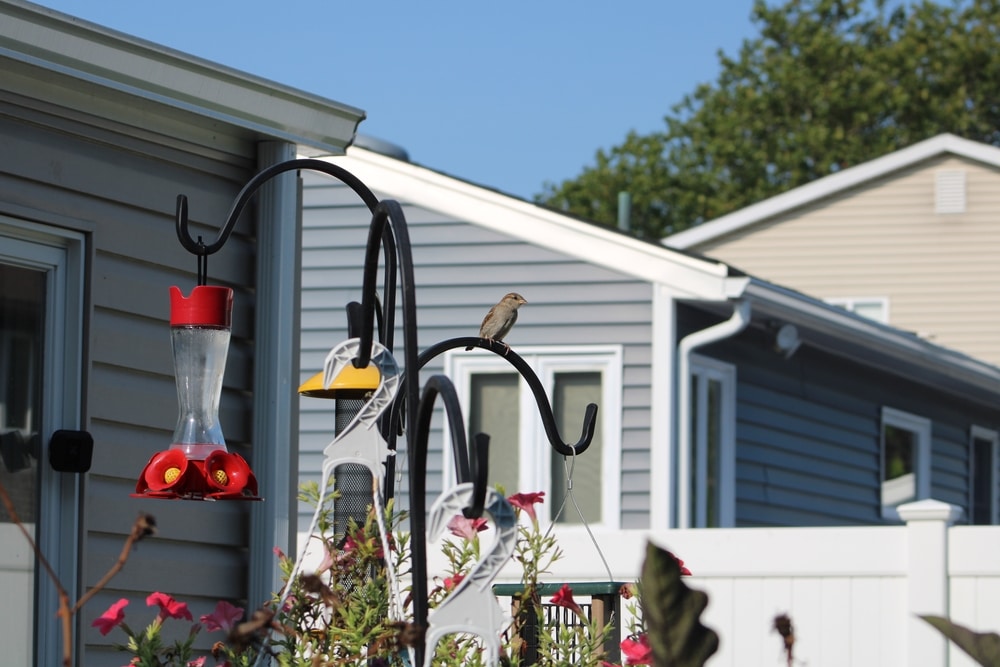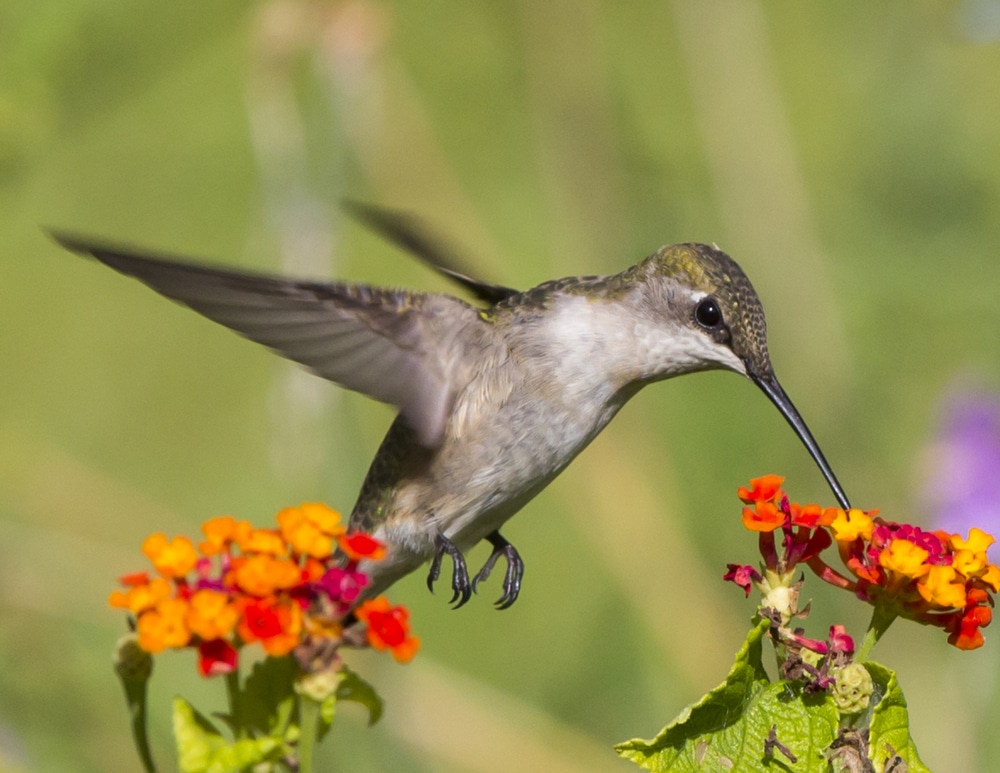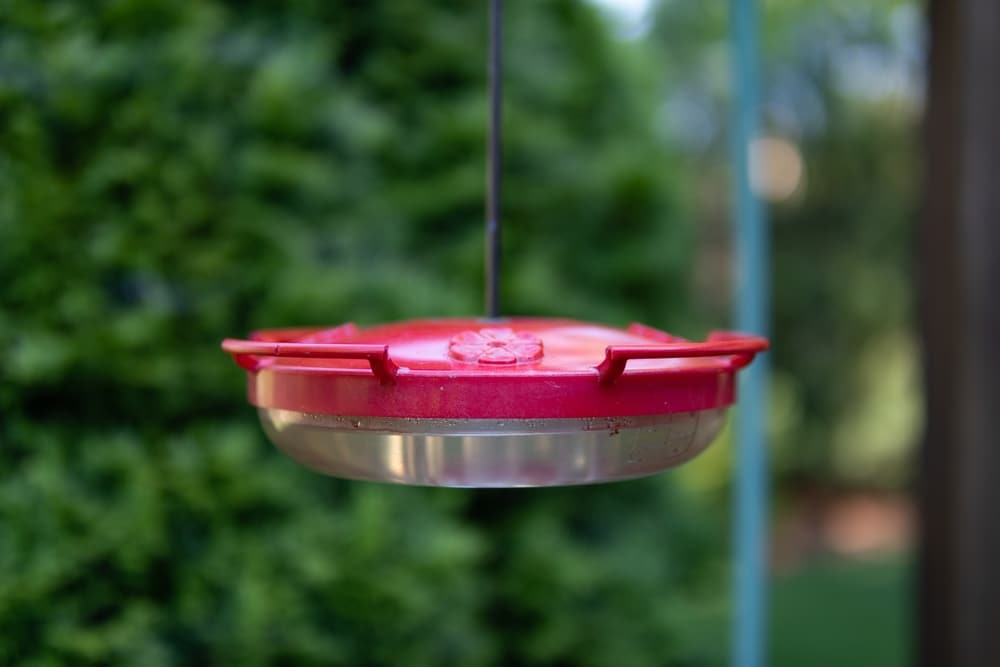If you have hummingbird feeders at your home, you know that they are excellent tools to watch and attract hummingbirds. Hummingbirds feed on nectar and require a lot of food to survive. So while they feed from nature and flowers, hummingbirds depend on feeders that people hang in their gardens or lawns.
When summer arrives, the amount of food you feed hummingbirds should change. Keep reading if you’re wondering how often you should change hummingbird food in the summer.
How Long Does Hummingbird Food Last in Hot Weather?

Hummingbird food is made of nectar, which includes water and sugar. While you can purchase nectar in nature or pet stores, it’s easy to make it home. When you make the solution at home, it is a chemical-free and affordable option.
After making or buying nectar, you should check your hummingbird food daily in hot weather. During the summer months, nectar can produce bacteria or mold, which is inedible for hummingbirds and can hurt them. Hummingbird food should last for two to three days but expect to change the food out once or twice a week.
When checking your hummingbird feeder, examine if there’s any discoloration or signs of bacteria. In hot temperatures, germs can grow more quickly, so hummingbird food will not last that long. Hummingbird nectar should be changed every few days or every week, depending on your location and temperature.
Does Putting the Food in the Shade Help?
Putting your hummingbird feeder in the shade can help. Hot temperatures will cause bacteria, mold, or germs to grow. Placing food in the shade, where it is out of direct sunlight, can slow the growth of toxins.
Even with feeders in the shade, you should continue to monitor the nectar daily. In the summer, even shaded feeders are exposed to high temperatures, which can pose problems for the food.
Can the Nectar Get Too Hot?
If you live in an area with temperatures of 90 degrees Fahrenheit or more, the nectar in your feeders can get too hot. The temperature of the food can depend on the material your feeder is made of.
Glass feeders tend to absorb sunlight more quickly, meaning the nectar can get too hot fast. Other feeders, like plastic models, can degrade or melt if exposed to high temperatures.
Try placing your hummingbird feeders away from direct sunlight, such as in shaded areas, and consistently check the temperature of your nectar. For example, if you place your finger in the feeder and it burns you or feels hot, it will be too warm for the hummingbird.
How To Help Hummingbirds in the Summer
Feeding hummingbirds during the excessive heat of the summer can be complicated. So we’ve broken down a few tips you should try to ensure that your hummingbirds stay healthy and happy.
Place Your Hummingbird Feeder in the Shade
Avoiding direct sunlight is the easiest way to keep hummingbird food cool. Shaded areas will also reduce the number of bacteria or fungal growth in the nectar, meaning you will not need to change the food out as often.
If shade is not available, pay attention to the sun positioning throughout the day. Areas of sunlight will move throughout your lawn as the day goes on, and some locations will be hotter than others. Make a note of the hottest areas and stay clear of them.
Regularly Test the Temperature of Your Feeder
During the summer months, you should check the temperature of your hummingbird feeder daily. You can stick your finger in the nectar to assess the temperature or feel the material of the feeder. The nectar is likely too hot for hummingbirds if it feels hot to the touch.
You should also perform a visual assessment of the food in the feeder. If you notice any signs of discoloration or cloudiness, it is a sign that the nectar has bacteria or fungus.
Change Hummingbird Food Out Every Week
To keep your hummingbirds healthy in the summer, regularly change the food in their feeders. Aim to do this once or twice a week. If you notice any signs of discoloration, immediately replace the nectar.
To consistently change the food, we recommend making a homemade nectar solution. By dissolving one sugar with four or five parts water, you will have nectar ready for hummingbirds.
To Recap
In the heat of the summer months, it can be challenging to ensure that your hummingbird feeders keep the birds healthy and hydrated. Just like humans, hummingbirds can become dehydrated when exposed to extreme temperatures.
Fortunately, there are simple steps you can take to keep your hummingbird house or feeders cool in the summer. Place feeders in the shade or places with less sunlight exposure. Always perform temperature checks on your feeders, and regularly change your nectar supply.

